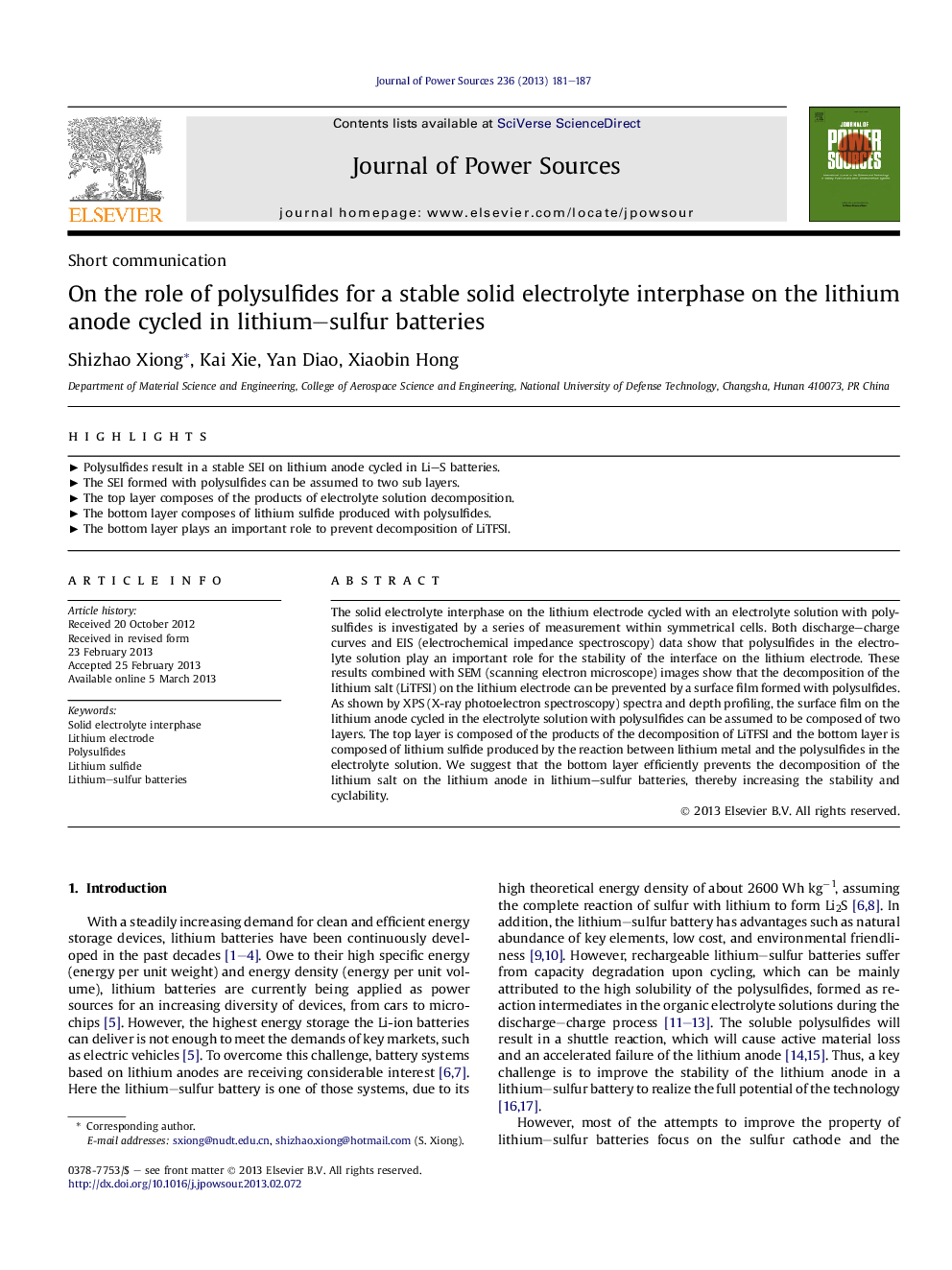| Article ID | Journal | Published Year | Pages | File Type |
|---|---|---|---|---|
| 1287815 | Journal of Power Sources | 2013 | 7 Pages |
The solid electrolyte interphase on the lithium electrode cycled with an electrolyte solution with polysulfides is investigated by a series of measurement within symmetrical cells. Both discharge–charge curves and EIS (electrochemical impedance spectroscopy) data show that polysulfides in the electrolyte solution play an important role for the stability of the interface on the lithium electrode. These results combined with SEM (scanning electron microscope) images show that the decomposition of the lithium salt (LiTFSI) on the lithium electrode can be prevented by a surface film formed with polysulfides. As shown by XPS (X-ray photoelectron spectroscopy) spectra and depth profiling, the surface film on the lithium anode cycled in the electrolyte solution with polysulfides can be assumed to be composed of two layers. The top layer is composed of the products of the decomposition of LiTFSI and the bottom layer is composed of lithium sulfide produced by the reaction between lithium metal and the polysulfides in the electrolyte solution. We suggest that the bottom layer efficiently prevents the decomposition of the lithium salt on the lithium anode in lithium–sulfur batteries, thereby increasing the stability and cyclability.
► Polysulfides result in a stable SEI on lithium anode cycled in Li–S batteries. ► The SEI formed with polysulfides can be assumed to two sub layers. ► The top layer composes of the products of electrolyte solution decomposition. ► The bottom layer composes of lithium sulfide produced with polysulfides. ► The bottom layer plays an important role to prevent decomposition of LiTFSI.
